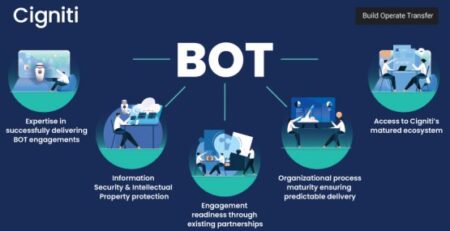How software quality assurance helps make technology dependable
Martin Luther King once said, “Nothing in the world causes so much misery as uncertainty”. Half the amount of panic spread among the global population is not because of the pandemic, it is because of ‘not knowing what will happen next’. There are several questions such as when the world will resume its usual operations, how long will it take to control the virus, what will happen to the global economy, and more for which there are no definite answers. A heavy cloud of uncertainty is looming over practically each and every aspect of our lives.
But, Mr. King also said, “You don’t have to see the whole staircase, just take the first step.” When we are surrounded by uncertainty, even the tiniest glimmer of hope can be enough to help us tread through a crisis. And when there is only uncertainty all around and things that are out of control, we crave some degree of dependability on things that we can still control. Technology is one such thing.
Digital technology has empowered the world to function mostly as usual despite the fact that everything else is changed, including the business priorities and the overall perspectives. Amidst the global lockdowns, people could stay connected with one another because of technology. Businesses could operate because of technology. Work from home and virtual education became feasible because of technology. And even our healthcare workers are being supported by technology to deal with the maximum number of patients without compromising on the care quality.
Forrester, in their recent report ‘Design for Dependability by Embracing a Future of Trusted Technology’, talk about the seven pillars of design which make a technology service dependable. As per the report, dependability is a measure of the profitability that a service will perform its intended function for a specified interval under stated conditions and an attribute of how well technology services endure a variety of real-world conditions’. Now, the question here is how one makes a technology dependable. The short answer to this question is software testing and quality assurance. Read on to learn the long form answer as we touch each one of the seven key elements of dependability.
How Software testing and quality assurance strengthen the seven pillars of dependability
Mark Zuckerberg talked about ‘moving fast and breaking things’, but later encouraged the mantra of ‘moving fast…with stable infrastructure’. Instability leads to uncertainty, which further results in lost credibility. A stable, working, dependable technology service will help businesses uphold customer trust as they cater to the increasing demand for speed in their offerings. Performing thorough software testing eliminates the possibilities of ‘unknown’ from an application and makes it highly dependable. Let’s look at the seven key elements of dependability and understand the role of software quality assurance for each one of them.
- Availability – to form the base line of dependability: Contrary to the popular belief, availability and dependability are not the same thing. Availability definitely is the prime KPI for measuring dependability. As the Forrester report points out – Dependable services and infrastructure have a high degree of availability, but an available service may or may not be equally dependable. Dependability makes a software or technology resilient to time and conditional constraints.
By testing a software application for availability, it is run for a certain amount of time to identify failure events and understand the required repair time. The obtained data is then compared to the original software requirements. The information obtained from running the software availability tests can help close the gaps between the original requirements and the actual uptime, thus, guaranteeing maximum availability in real-life conditions.
- Capacity – to serve during all lean and busy moments: The average load on any digital-supporting software application has seen an unprecedented spike amid the global lockdowns. As organizations shifted to remote working, digital communication & collaboration platforms such as Microsoft Teams and Zoom tremendous increase in the number of daily users. To deal with such unpredictable usage demands and heavy load, it is essential for businesses to build scalability into their services.
Load testing can help benchmark the maximum amount of load and number of concurrent users an application can handle. It helps measure response times, throughput rates, resource-utilization levels, and breaking point to determine the peak load conditions for a software application. Combined with cloud testing, load testing can enable a software technology service provider to understand the maximum capacity for their application and take preemptive measures to avoid its breaking in case of sudden surge in demand.
- Performance – to ensure that services meet desired levels: The performance metric has a major overlap with the capacity and availability metrics. A high-performance software application is highly responsive, scalable, and available. With end-to-end performance engineering solutions, businesses can gain a comprehensive analysis and recommendations for performance improvements that would help them build and deliver a future-proof application that is flexible and have a higher benchmark for stress and endurance than the competition.
- Simplicity – of operations for day zero and beyond: Dependability, as per the report, requires a balance of speed of development with simplicity of application operations. With the introduction of multiple APIs, gargantuan architecture applications, and complex interdependencies, it often becomes highly challenging to maintain the software from breaking. Due to the severely complex structure, the repair takes a huge amount of time, and this entire episode can cause a fatal blow to the service provider’s reputation.
The ideal course of action for such cases is to break the monolith application down to microservices. With a multi-tier testing approach, involving unit testing, integration testing, component testing, contract testing, and end-to-end testing, microservices architecture proves to be a boon when it comes to handling massive software applications.
- Consolidation – of all operations: The increasing adoption of DevOps and Agile methodologies have led to the dissolution of existing silos while promoting more collaboration across teams. The elimination of silos results in higher speed, better innovation, and greater scale. Implementing DevOps and Agile methodologies require an overall cultural shift which supports higher cross-team collaboration, improved code quality, responsiveness to change while fostering an all-rounded growth environment for a business. With Agile practices, organizations can find the perfect balance between the application’s stability and their ability to accelerate their time-to-market. With Agile & DevOps inculcating a culture of quality into the core of software development, the end product measures high on all the parameters of dependability.
- Costs – of technology services that can’t grow linearly with availability levels: Tightly-coupled software applications are expensive, operationally fragile, and highly resistant to change, leading to a catastrophic failure. A microservice architecture, on the other hand, services are loosely coupled yet cohesive, which means that they are easy to maintain, flexible, and still function well together. With each microservice taking the ownership and responsibility of its functional and non-functional aspects, they facilitate a faster and efficient delivery of services while keeping the costs under control.
- Trust – of customers that you’ll deliver services securely: There were a lot of apprehensions and hesitations among the users as they fundamentally shifted their life to digital. There are constant concerns of privacy and security as they exchange their information across digital channels and communicate online with their peers, friends, and families. Security and privacy may be the one of the biggest challenges that the businesses had to address while shifting their entire workforce to remote conditions. Forrester says, “Delivering secure services is the bedrock of customer trust.”As the number of users increase, as the users operate their devices outside the secure walls of a business organization, and as more organizations move to cloud for achieving scalability, security testing of the software applications becomes immensely critical. Security and penetration testing services help uncover potential vulnerabilities, mitigate and minimize risks, and benchmark the software application for increased quality.
How our software quality assurance services can make your technology service dependable
Cigniti is an independent quality engineering and software testing company with services and solutions for the next generation enterprises and ISVs across the globe. Our experienced quality assurance professionals have a hands-on, end-to-end understanding of the challenges faced by enterprises while on the path of digital transformation. With industry-leading software testing methodologies and applications, Testing Centers of Excellence, and world-class software testing Labs, we deliver on our promise of making your software application highly dependable in the era of great uncertainty. Schedule a discussion with us to discuss your challenges and understand how we can help your organization.





Leave a Reply